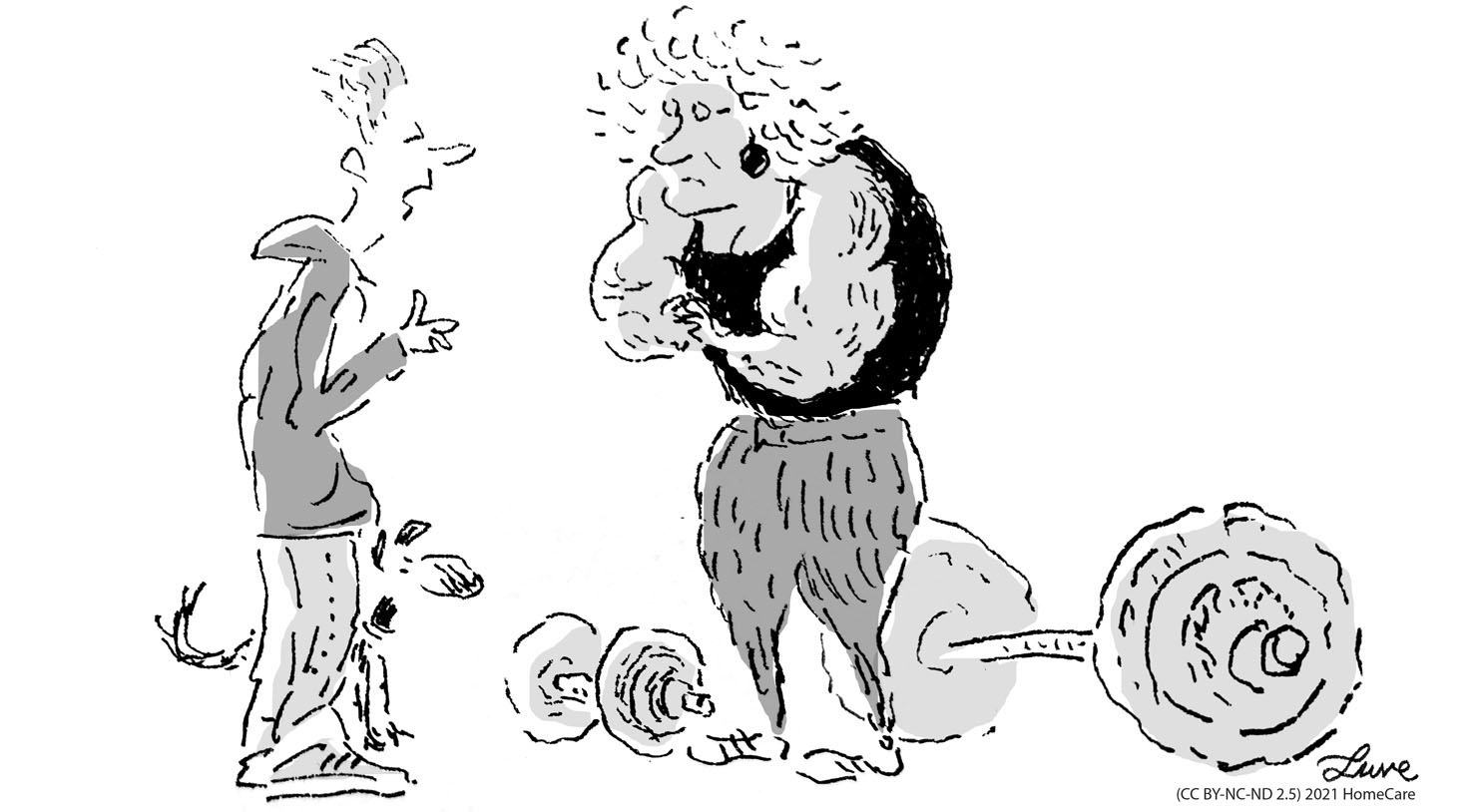
“Hey grandma, don’t you think you are taking this exercising idea a bit too far?”
Osteoporosis is a disease that is often referred to as a “silent thief of bone”. It causes progressive loss of bone mass, which makes bones much weaker than in a healthy person.
Thus, people suffering from osteoporosis are more vulnerable to injuries. Fractures occur frequently, mainly affecting the spine, femoral neck and radial bone.
The risk of osteoporosis increases with age. This condition tends to accompany other chronic diseases, including diabetes, hyperthyroidism, kidney problems, and may even be a consequence of a prolonged intake of certain medications. In the elderly, it is common to have a lower degree of calcium absorption, which increases the probability of the appearance of osteoporosis.
What causes osteoporosis?
![]() Advanced age
Advanced age
![]() Joint overload
Joint overload
![]() Injuries
Injuries
![]() Previous inflammatory states
Previous inflammatory states
![]() Metabolic diseases (e.g. gout)
Metabolic diseases (e.g. gout)
![]() Obesity
Obesity
What are the symptoms of osteoporosis?
Initially, the disease develops asymptomatically, therefore it is difficult to identify it (it does not show typical symptoms thanks to which it could be diagnosed). The most common symptoms that may indicate osteoporosis include:
![]() Frequent fractures Caused by minor injuries (e.g. by tipping over or hitting against an object)
Frequent fractures Caused by minor injuries (e.g. by tipping over or hitting against an object)
![]() Joint pain Escalated by overload after a longer physical activity, often disappearing after rest
Joint pain Escalated by overload after a longer physical activity, often disappearing after rest
![]() Stiffness Including the so-called morning stiffness
Stiffness Including the so-called morning stiffness
![]() Limited movement
Limited movement
![]() Hunching and pain at the more advanced stages.
Hunching and pain at the more advanced stages.
Diagnosis and treatment
Diagnosis of the disease is based on medical interviews and specialized examinations.
If any symptoms in an elderly person that may imply osteoporosis are noticed, it is necessary to consult a doctor. The doctor will conduct an interview to determine if there are any risk factors that contribute to the development of the disease (e.g. inadequate diet, fractures, history of fractures in the family, addictions, other medical conditions, medications the person is taking, etc.).
In the next step, the doctor will recommend appropriate examinations to determine whether the disease has developed and how advanced the stage of the disease is. The basic test is a densitometry examination that measures bone mineral density (if the index is lower than -2.5, it denotes osteoporosis). Suspected osteoporosis is followed by further tests, which will allow the doctor to assess the risk of fractures and diagnose the sick person more precisely.
Prevention and aid
Diagnosis of the disease is based on medical interviews and specialized examinations.
Helping an elderly person suffering from osteoporosis is primarily based on eliminating risk factors from their surroundings. They may include:
![]() Loose carpets
Loose carpets
![]() Poor lighting
Poor lighting
![]() Lack of support in the house (e.g. handrails in the case of high stairs)
Lack of support in the house (e.g. handrails in the case of high stairs)
![]() Inappropriate footwear
Inappropriate footwear
![]() Using a walking cane
Using a walking cane
![]() Support when going for a walk (paying attention to uneven pavements, slippery surfaces)
Support when going for a walk (paying attention to uneven pavements, slippery surfaces)
The risk of developing the disease may be reduced by the following factors:
![]() Physical activity
Physical activity
![]() Calcium-rich diet (dairy products)
Calcium-rich diet (dairy products)
![]() Change in the medication
Change in the medication
![]() limitation or elimination of stimulants (cigarettes, alcohol)
limitation or elimination of stimulants (cigarettes, alcohol)
Back Next
![]()
Common Diseases of the Elderly:72% complete
